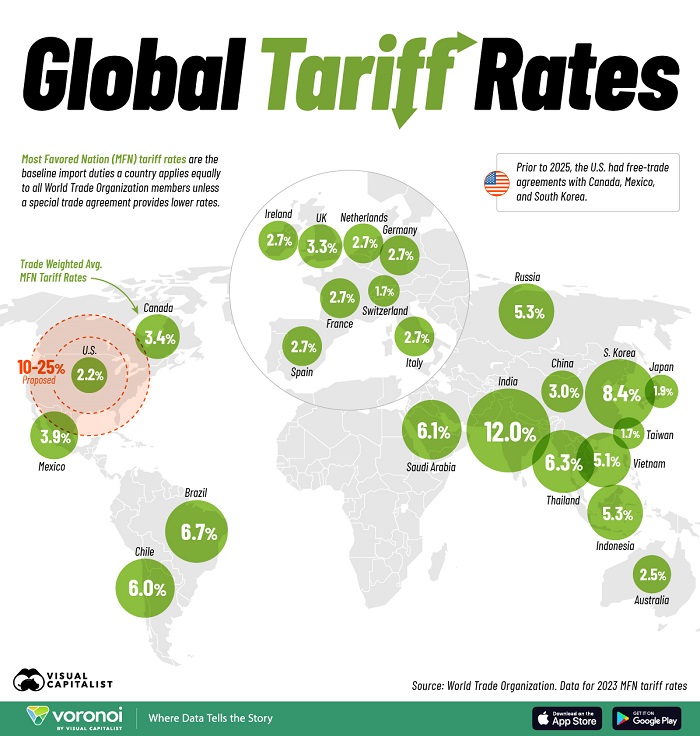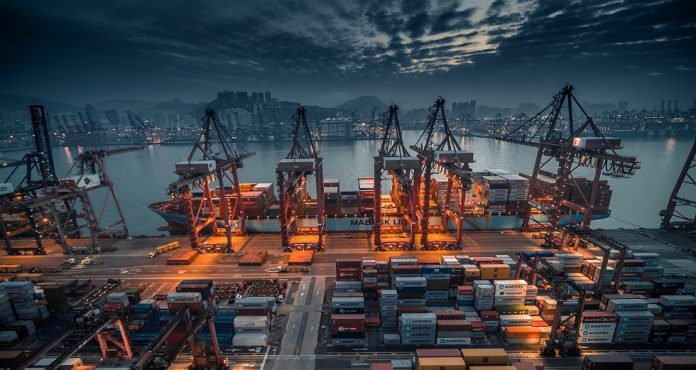On April 2nd, President Donald Trump unveiled a dramatic shift in U.S. trade policy, announcing a series of new tariffs aimed at key global trading partners. The announcement includes a 24% tariff on Japanese imports, a 26% tariff on goods from India, and a striking 49% tariff on products from Cambodia.
Alongside these targeted levies, a 10% baseline tariff will be applied to imports from all countries, regardless of existing trade relationships. This new baseline is scheduled to take effect on April 9th.
A Break from the Global Norm
These changes represent a significant departure from global norms. According to the World Trade Organization (WTO), most of the world’s major economies maintain average trade-weighted tariff rates below 5%. These rates reflect the average tariff applied to imports, weighted by trade volume, and serve as a key indicator of a country’s openness to trade.
-
 The European Union maintains an average trade-weighted tariff of 2.7%, though this could rise if retaliatory measures are taken.
The European Union maintains an average trade-weighted tariff of 2.7%, though this could rise if retaliatory measures are taken. -
Japan applies just 1.9% on average, with low tariffs designed to support trade and innovation.
-
Switzerland and Taiwan have the lowest rates globally, at 1.7%.
-
In stark contrast, India enforces the highest average in the region at 12%, with specific tariffs — such as those on automobiles — soaring up to 100%.
The Role of MFN Status and Trade Agreements
Under WTO rules, all 170 member countries agree to apply a standard import duty to one another under the Most Favored Nation (MFN) principle, unless a special trade agreement provides otherwise. Historically, the United States benefited from several such agreements, notably with Canada, Mexico, and South Korea, which allowed for duty-free trade or reduced tariffs.
However, Trump’s new approach marks a clear departure from these free trade principles. By implementing blanket tariffs and targeting specific countries, the administration is signaling a return to economic nationalism and protectionism.
Economic and Diplomatic Repercussions
These new tariffs are likely to spark global reaction. Economists warn of supply chain disruptions, increased costs for U.S. consumers, and a possible uptick in inflation. On the diplomatic front, countries affected by the new tariffs may retaliate with measures of their own, further escalating global trade tensions.
The full impact of this policy shift remains to be seen, but one thing is clear: the United States is charting a new, more confrontational path in global trade.
Source: www.visualcapitalist.com






































